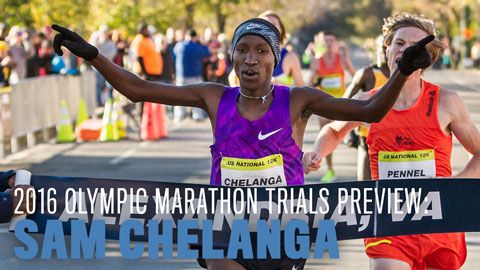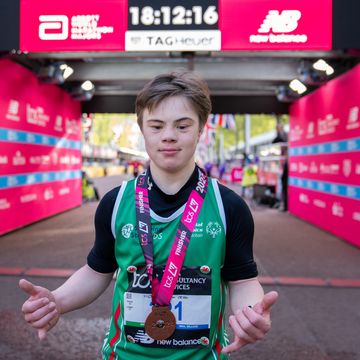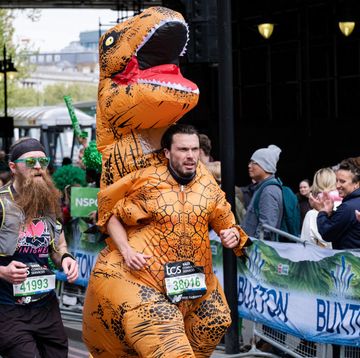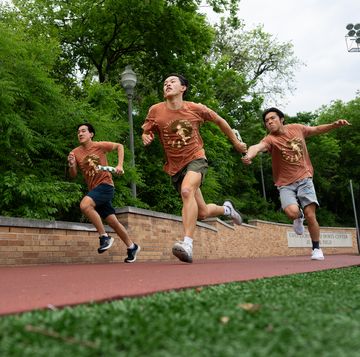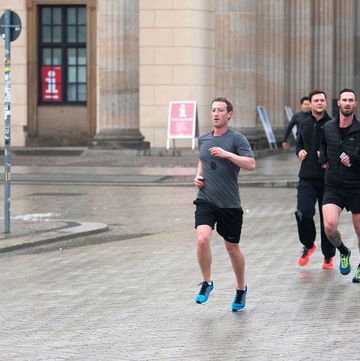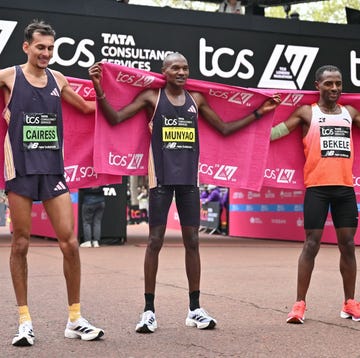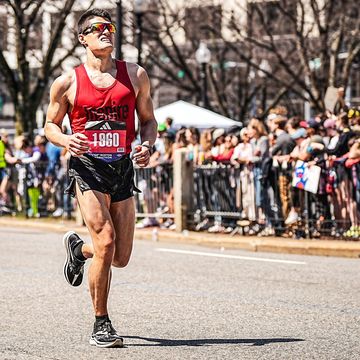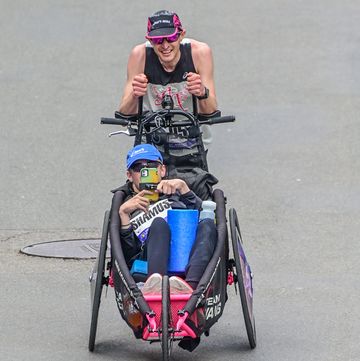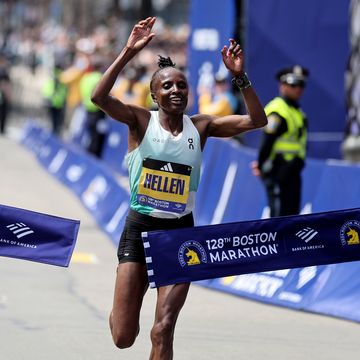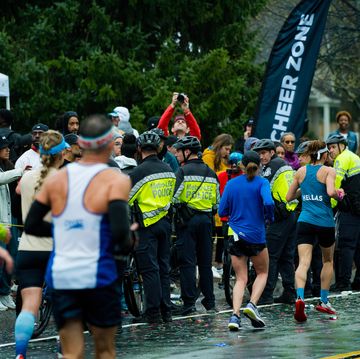The 2016 U.S. Olympic Marathon Trials are Saturday morning in Los Angeles, and the men’s race starts at 10:06 a.m. local time. The top three finishers will be selected to represent the U.S. at the Olympic Games in Rio, where the men’s marathon is scheduled for August 21, the final day of the 2016 Olympics.
The race in L.A. features a fascinating matchup between the old guard and the newcomers, led by track sensation Galen Rupp in his first race longer than 13.1 miles. Here are five things look for while you watch the men’s trials.
A battle between experience and speed
Who’s going to make the podium in the men’s marathon? Anyone with half a brain should pick the guys who’ve been there, done that. In the Olympic trials, more than in other races, the ability to perform under pressure separates the big dogs from the puppies. Until recently, there were four big dogs entered: Meb Keflezighi, Dathan Ritzenhein, Ryan Hall, and Abdi Abdirahman. All four have made at least one U.S. Olympic marathon team and achieved a lot more on the side.
But now we’re down to two. Ryan Hall announced his retirement and Abdi has scratched due to injury. That leaves Meb, age 40, and Ritz, who has battled a seemingly endless string of injuries over his career.
The door is open for at least one—and possibly three—newcomers, men who can’t currently use the moniker of Olympic marathoner.
A big pack through the first half
Here’s the most interesting thing about the men’s race: The young guys aren’t afraid of the old guys, but the young guys also aren’t established marathon talents. And, lest anyone forget, this is a 26.2-mile test. Split times don’t count.
No one has any reason not to challenge Meb and Ritz. On the other hand, 60 percent of the male qualifiers got into the trials through their half marathon performances (versus 20 percent among the women). As a result, there are lots of fast men in the marathon trials, but they are also relatively untested in the marathon. In addition to Rupp, Diego Estrada and Sam Chelanga come into the trials with fast half times and zero prior marathon experience.
In practical racing terms, this means the puppies will cluster around Meb and Ritz, hoping that’s the smart thing to do, and that they can hang on for the full distance. Meanwhile, Meb and Ritz will feel no need to attack. They hope to prevail by attrition. Expect to see a good-size pack through the halfway point. Then comes nail-biting time as we find out who’s in shape, who’s not, and who has marathon-strong legs to carry them all the way to the tape.
The Rupp factor
Rupp, 29, is arguably the greatest American distance runner of all time, coached by one of the guys, Alberto Salazar, who ranks just a stride or two behind him. Rupp will be making his marathon debut at the trials, which has dramatically increased interest and speculation about the event.
Will he win? He should. The jump from 13.1 miles to 26.2 miles is more treacherous than any other move up in distance (say from 5,000 to 10,000 meters, or from 10,000 to the half marathon), but it’s on the same continuum. It’s not like Michael Jordan trying to transition from basketball to baseball.
For confidence, Rupp need look no further than his coach, who won his first marathon (New York City in 1980 in 2:09:41) after no race longer than a one-hour track effort of 12.14 miles. Three years ago in his half marathon debut, Rupp clocked a 1:00:29.
On paper Rupp is so much stronger than the rest of the field that it’s hard to imagine him not winning. Some have claimed that the sharp 180-degree turns on the course will throw him off his rhythm. Oh, please. Rupp’s been running world-class indoor track races for a decade. What could level the playing field are the heat and the pollen forecast—Rupp suffers from allergies and asthma.
This isn’t rocket science. It’s running, and Rupp has the right stuff. Also, for the first time in his life, he’s got more speed than anyone else.
Can Meb pull another miracle?
Keflezighi is everyone’s sentimental pick, but making the team will be a tall order for him. The U.S. hasn’t had an over-40 runner in the Olympic marathon in modern times.
He should be in the pack for much of the marathon, igniting fans’ hopes. But when the going gets tough, will he still have the willpower or firepower? He has basically admitted that with his victories in New York and Boston and an Olympic silver medal in 2004, he’s accomplished everything he could hope for in his marathon career, and now he has entered the victory-lap phase.
Ritzenhein, 33, meanwhile, has been a fragile runner, beset by a series of short-term injuries. He has declared himself battle-ready for the trials, however, and he’s the one most likely to push the throttle the last three to six miles to soften up whoever is still hanging on.
That tall guy in the lead pack
The biggest sensation in U.S. road racing the last four months is also, at 6-foot-4, the tallest guy with a really good chance of making it to Rio. You shouldn’t have any trouble making him out among the many medium-size runners who stand six to eight inches shorter.
This would be Luke Puskedra, 26, who basically quit running 15 months ago after a disastrous marathon debut in the 2014 New York City Marathon, where he ran 2:28:54. He gained 20 pounds and could barely match his tennis-player wife on easy two-mile jogs.
Things turned around last spring when the couple moved from Portland to Eugene, Oregon, and Puskedra reunited with his college coach from the University of Oregon, where he had been a standout cross-country runner. Last October Puskedra stunned the U.S. marathon community with his sparkling 2:10:24 in Chicago. A month ago, he flashed another fast one—a 61:29 in the Houston Half Marathon.
He’s on a roll, his confidence soaring, which is exactly what you want when you enter the Marathon Trials. Puskedra describes himself as an “all or nothing” guy, so don’t expect anything strategic in his trials race. He’ll attach himself to the front pack, cover any strong moves, and, possibly establish himself as a leader of the next generation of top American marathoners.
